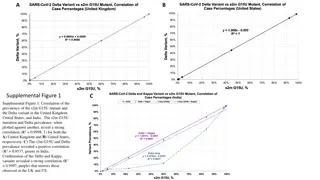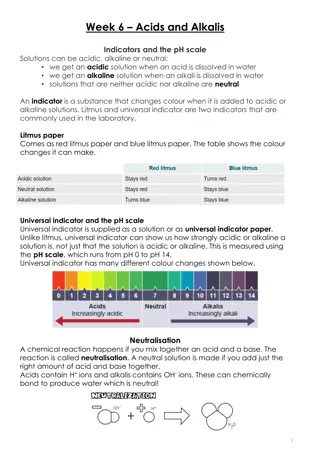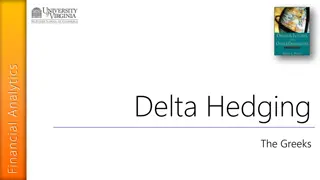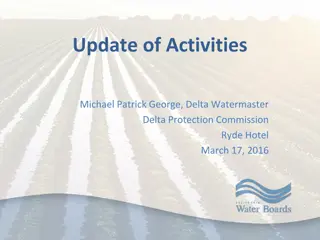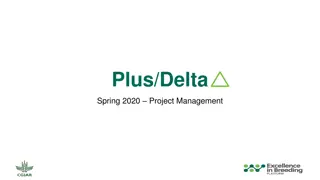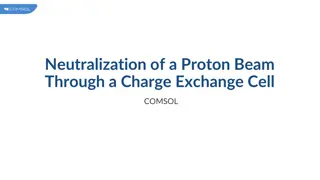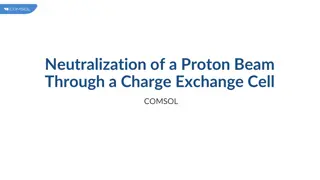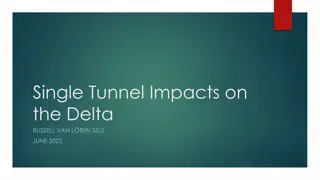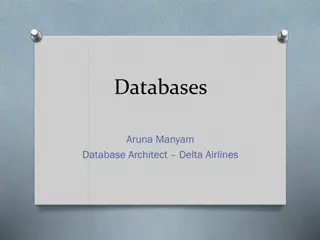Delta Neutral Butterflies
Delta neutral butterflies are options trading strategies that involve the combination of multiple options positions to create a risk-defined, high-yield scenario. They utilize the concept of delta neutrality to reduce directional risk and benefit from changes in volatility and time decay. This summary covers the basics, strategies, and key components of delta neutral butterflies such as iron butterflies, unbalanced flies, and setting up the trade effectively. It also delves into the importance of Greeks in options trading success and the role of skew, strike, and the Black-Scholes model in shaping these strategies.
Download Presentation

Please find below an Image/Link to download the presentation.
The content on the website is provided AS IS for your information and personal use only. It may not be sold, licensed, or shared on other websites without obtaining consent from the author.If you encounter any issues during the download, it is possible that the publisher has removed the file from their server.
You are allowed to download the files provided on this website for personal or commercial use, subject to the condition that they are used lawfully. All files are the property of their respective owners.
The content on the website is provided AS IS for your information and personal use only. It may not be sold, licensed, or shared on other websites without obtaining consent from the author.
E N D
Presentation Transcript
The Option Pit Method Delta Neutral Butterflies Option Pit
Today What is a delta neutral butterfly? Iron Butterfly Butterfly conditions via BS model and Greeks What makes a delta neutral butterfly work? Skew and strike Advanced- Unbalanced fly Create a trade plan
What is an Iron Butterfly An iron butterfly is in many ways simply a straddle that is hedged We remove most of the directional risk It involves selling an ATM (or near) call spread and selling an ATM (or near) put spread at the same time. The net creates a tightly risk defined, high yield area for the spread to profit from
Setting up the Butterfly Looking at the ATM straddle What credit do I get (1/3 risk on credit or less) Wings approx. straddle distance apart
Keys to Success Notice that the Delta Neutral Butterfly have some Greek you can compare: Flatter Delta (more on this later) Short Gamma Short Vega Long Theta The question is if we don t have delta, how do we make $$$$$$$$$$
Delta Neutral Basics Option trading success has several parts that can be broken down to the model and translated into the Greeks- Stock Price to Delta Strike to Gamma (and Skew) Implied Volatility to Vega Time to Expiration to Theta We will examine each in detail and circle back
Strike and Gamma If this is our butterfly we should see What the market is giving us first
The Option Model Remember that Black Scholes wants a single forward volatility going forward to expiration The option market gives us skew to adjust some of the central assumptions in BS Namely increasing forward underlying values (lognormal distributions) Annual volatility assumptions This gives us an opportunity to sell relatively expensive options if we can manage the Greeks
Define Edge Edge trading options is selling one volatility for a higher value than another. We buy low Vol and we sell high Vol Identify what the position is! The Volatility in our butterfly strikes is as follows 2350 10.46 2370 8.97 2390 8.23
Edge and Strike Now lets sum our vols: + 1x 2350 10.46 -2x 2370 8.97 +1x 2390 8.23 10.46+8.23/ 2 = 18.69/2 = 9.345 8.97 or .37 in Neg Edge What this means is the we buy 9.345 IV and sell ATM IV at 8.97. The market is charging us for ATM flies.
Edge and Strike Recall our Vega per strike: .37 in negative edge translates to $46 in lost dollars so a trader waits have A day of decay just to get back to even. This is rotten way to start a trade
Implied Volatility and Vega Where can the IV go?
Implied Volatility and Vega As with strike, we are looking for edge in the IV we take as a position. In a DN Butterfly we want declining IV Realized Volatility is very low but we might have to manage a move if IV expands Realized vol is moving a bit higher lately but it is low enough that a fly could work Declining realized vol over the hold time is OPTIMUM
Vega and IV How many dollars can we From a drop in IV? Put this into the equation When pricing out the butterfly.
Evaluating the IV drop Take a look at the term structure The realistic bottom for on cycle Sigma is are 7.5% There is scant IV to sell with our IB through the cycle If IV is part of the dollar producing setup, it is very thin right now
Time to Expiration and Theta Keep this rule simple- the shorter term the better The reason is decay is accelerated by drops in IV If it happens in 1 day, so much the better The longer the term the more Vega becomes a factor and the greater chance for running outside the tent A seller of options wants to capture and close
Short and Long term risk trade off March 17 Mar 31
Time to Expiration and Theta By increasing the time to expiration we get less theta and more short Vega Do we want that? Selling Vega is ok as long as there is a real potential to drop but there is no sense in increasing the risk for near the same Theta We are learning to evaluate risk per trade
Delta and Underlying Price Most delta neutral (or reduced delta) butterflies want to stay pinned to the short strike Unbalance or broken flies want to travel to the short strike and thus have an implied delta If Delta becomes a factor in the Butterfly (as in bad factor) We close or adjust
Adjusting the butterfly We only adjust butterflies if the economic make sense Add long contacts to the fly, calls puts Make sure there is edge there still Evaluate the move back to the short strike This is why we would reduce deltas in the first place
Unbalanced Butterflies Conditions are not great for standard ATM butterflies lately We can change that by changing the strikes The same fly rules still exist except the unbalanced fly presses all the conditions
Setting up the Unbalanced Fly Identify the ATM straddle value The ratio will 1/ 3 /2 or 2/ 3/ 1 This can be done as an Iron Fly with call spreads and put spreads We want the underlying of the fly to slide to the short strike Add up the collective edge for a stop or go
Add up the Fly edge +2x 2355 @ 9.91% -3x 2365 @9.25% +1x 2385 @8.43% or 9.41 weighted average vol so neg .16 edge still
Setting up the Unbal Flay Take the straddle price Use 2 contracts half of the straddle distance away Use 1 contract the straddle distance away Try for a vol credit
Ways to manage the UFLY Note the risk profile on the fly There is an implied delta (a bit short) Manage the risk to the single strike (might have to buy a call) Since the short strike is below the money, that is where we want this to go Change the strikes, change the bias but look for the edge
Skew and strike behavior We will walk through this on the Skew-o-later!
The delta neutral FLY plan What is going on with the volatility trends in IV, HV and Sigma Identify the edge in the fly strikes and set up the position What are the Greek tradeoffs in your prospective setup? How does the positions profit to greenlight the setup? Pre-establish adjust and close routines based on edge and movement
Summary A delta neutral fly depends on other factors beside just delta Volatility conditions play a huge roll in picking entry Option edge is quantifiable on at the outset By changing strikes we can get more risk and alter the effective delta Work the trade plan










